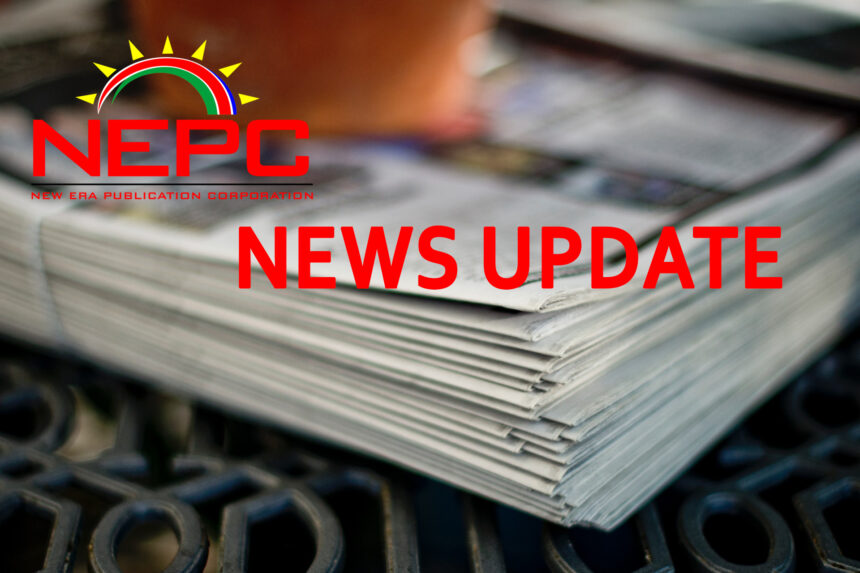Successive governments of the Republic of Namibia have over the years pioneered various programmes with the distinctive aim of poverty eradication. First was Vision 2030, a programme whose objectives were vague from its inception, and still is. There was mention of housing for all by 2030, yet eight years before this penultimate year, informal settlements are sprawling in all towns. Next, there is Harambee, another vague rhetoric, which can be perceived as a political gimmick.
The Harambee project seems to have given birth to the food bank, a project through which the poor receive food parcels. 31 years after independence, the question still remains, have we done enough to eradicate poverty?
Vision 2030 targets are: (I) Unemployment declines to 5% from 35%; (ii) Gini-coefficient, a measure of income inequality and poverty, falls from 0.7 to 0.3; (iii) Per capita income to have increased to the level of developed high income countries; (iv) The rural sector, with its traditional economy, will be transformed and integrated into a modern economy.
It is sad to point out that these targets are miles away from being achieved and there is no indication that they will be attained by 2030. The Vision 2030 programme, introduced in 2004, envisaged that unemployment would decrease to 5% by 2030. It is important to be cognisant of the fact that at the launch of Vision 2030, the unemployment rate was 35%, and currently, we are at 33.4%. It does not require a genius to comprehend that there is no progression.
We are just eight years shy of the end of this programme, and yet the unemployment rate is still skyrocketing. What compounds this dilemma is that youth unemployment is expected to reach 50.3% by the end of 2021.
It goes without saying that the youth are the lifeblood of our economy and one wonders how Namibia will become “a prosperous and industrialised nation, developed by her human resources, and enjoying peace, harmony and political stability”, as stated in the Vision 2030 programme.
Poverty eradication, another key target of Vision 2030, is also far from being achieved. Government introduced Harambee Prosperity Plan in 2016 and it was stated that it will not replace Vision 2030 but complement it.
It is, however, sad to note that five years after the launch of a programme, which promises prosperity for all, all we see is the stench of poverty in our communities. According to the HPP1, improving social conditions (poverty eradication) is one of the key pillars of the prosperity plan.
There is however no clear progression towards attaining this key objective. The HPP at its inception promised elimination of poverty, fast tracking of urban land service delivery, housing and improved sanitary conditions countrywide and acceleration of vocational training skills.
The million dollar question is whether these critical objectives have been achieved, particularly because the first period of HPP has been concluded and the 2020–2025 programme has been launched.
To begin with, there is still so much poverty in our society. It could be true that no one has died directly as a result of hunger; poverty however is not always measured by hunger. According to Confidante, 23 September 2021, Namibia Red Cross society reported about the outbreak of Hepatitis E that claimed three lives while 554 people were undergoing treatment.
It must be noted that Hepatitis E is contracted through drinking water contaminated by human faeces. If this is not poverty, then I do not know what poverty is. It is sad to note that 76% of the Namibian rural population is still practising open defecation, 31 years after independence.
It is safe to state that there has been no tangible progress in the provision of sanitary infrastructure for rural communities, despite this being a key objective under the HPP.
The HPP final report for the period under review actually indicates that the construction of 50 0000 rural toilets fell behind schedule in all 13 regions, with only 3 546 toilets being constructed.
With such statistics, one wonders if the goal of providing healthy sanitary conditions for all by the end of the HPP project will be achieved.
The HPP sought to complement the Vision 2030 objective of providing housing for all by 2030, and yet HPP2 indicates that approximately 230 000 households continue to live in shacks countrywide.
People also continue to invade land in most towns despite the HPP1 promising fast tracking of urban land service delivery and housing. There is also no development of rural communities as promised in vision 2030 and this has led to constant rural-urban migration.
Another project which has been initiated for purposes of poverty eradication is the food bank, but the fruits born of this project are also debatable.
The question to be asked is whether we can eradicate poverty through giving people food parcels; give a man fish, you feed him for one day, teach him how to fish, you feed him for a lifetime.
If we want to eradicate poverty, skills development is paramount as this will capacitate people to engage in income generating projects; this is what the government could have done.
It is also not clear who the beneficiaries of the food bank are; how they are determined and how far the project stretches into rural communities.
It is critical to assess the impact of the food bank project since its inception. But surprisingly, we are now hearing that instead of food parcels, there are now plans to give people money. Is this a solution to poverty, and how are we sure that this money will be used to buy food and not end up in shebeens?


